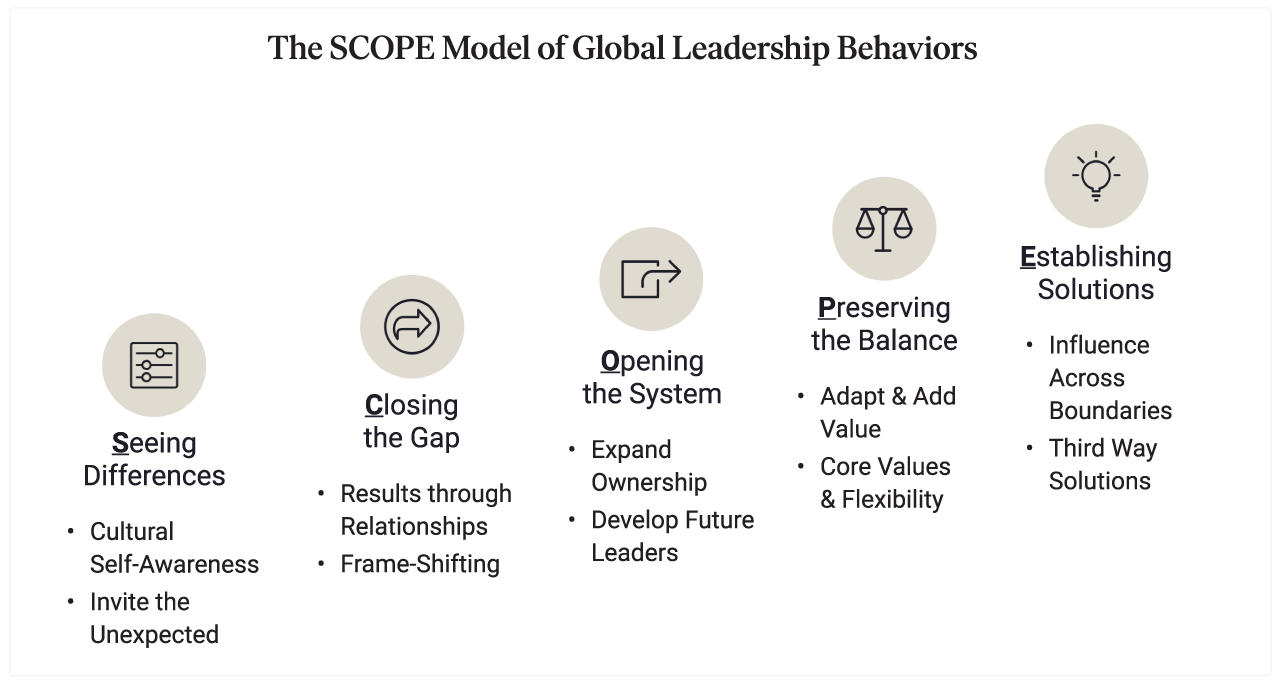


For decades we have heard the term VUCA, which highlights the volatility, uncertainty, complexity, and ambiguity of the global business environment. Over the last several years each of the four VUCA factors seems to have further intensified. Now there are increasing references to a global “polycrisis,” or multiple trends—climate change, war, pandemic, supply chain disruption, economic decoupling—that interact with and compound each other. It is essential that leadership development initiatives equip current and future leaders with the competencies to function effectively under these hyper-VUCA circumstances.
Some trends have long been predicted and continue to unfold: population growth in developing nations, rapid urbanization, generational handoffs in the workplace, and intensifying competition for scarce resources such as water or strategic minerals.
Other major events were unanticipated and have repeatedly roiled world markets. For example, although climate change is now broadly recognized, it is difficult to predict where a specific mega-storm or a drought like the one that has affected the Panama Canal might strike. Russia’s invasion of Ukraine was a surprise to almost everyone, as was the latest armed conflict between Israel and Hamas. The sudden onset of the Covid pandemic led to a global healthcare emergency accompanied by a drastic shift to remote work arrangements for some professions, and the pandemic appears to have permanently altered expectations in many organizations regarding face-to-face office time.
Technological change often results in surprises, but with the recent exponential growth of artificial intelligence (AI), most companies are scrambling to assess the potential impacts on their business and to invest in customized applications. Generative AI is quickly making certain job categories obsolete, especially those with repetitive tasks, while creating other new jobs to customize, deploy, and improve its functionality. An even larger change management project will be incorporating this technology into existing job roles and work processes. According to the World Economic Forum, 75% of companies surveyed across industries are set to have adopted AI technologies by 2027, and the steep rise of AI’s importance is accompanied by a rise in organizations prioritizing the leadership and social influence skills required to handle such dynamic changes.
So what are the implications for leaders today? In our own work we have continued to test and update our understanding of the most essential global leadership behaviors in the light of ongoing trends, with input from current clients and academic sources. Our SCOPE model of global leadership behaviors was initially based on in-depth research with executives from 26 different countries, representing 14 multinational companies headquartered in every major world region, who had been identified by their employers as their most successful expatriates. Among our other interview questions, we asked them each, “Based on your experience in leadership roles both at home and abroad, what is different, if anything, about global leadership?” This extensive research project resulted in the model depicted below, which identifies five stages and 10 behaviors that these leaders shared in common.

All ten behaviors have stood the test of time and are still relevant, but three in particular stand out in today’s environment: Invite the Unexpected, Develop Future Leaders, and Third Way Solutions. Here is an updated definition of each of these three, focusing on several related transitions that are vitally important for leaders now.
A typical pitfall for aspiring leaders is attempting to replicate prior patterns of success—a particular style of communication or problem-solving, insights into customer needs, or a favorite product solution—in a different business environment. The leadership behavior, “Invite the Unexpected,” enables greater flexibility in response to unfamiliar circumstances. With rapid-fire change becoming the norm, many forms of expertise are becoming outdated at a faster pace, making it even more vital to be able to anticipate and respond to both anticipated and unexpected changes.
To invite the unexpected today combines elements of market research, risk management, and scenario planning, all taking into account a highly interdependent set of global factors. Depending on the type of business you are in, there are numerous questions, both micro and macro, that you should consider. Larger examples of critical “what if” questions could be:
The term “high-potential leadership candidate” has long been common, and these candidates received a series of developmental opportunities designed to prepare them for top leadership positions. Annual corporate succession planning exercises typically review and discuss the job roles and leadership training programs that will support these candidates. While some companies still offer such opportunities, present-day leadership requirements have expanded, and now even first-line managers, who until recently were individual contributors themselves, are tasked with drawing out the talents and leadership potential of a highly diverse set of team members.
So instead of waiting until later in their career to become a coach or mentor, first-line managers frequently find that the leadership pipeline has been compressed to fewer stages which might also take place concurrently. In addition to accomplishing their immediate business goals or project objectives, talent development has become a significant part of their management portfolio as well, and they need to become familiar with techniques and tools they can use for this purpose. An estimated 90% of companies expect their managers to act as informal coaches, and this may be one cause for the continued rapid growth and high reported ROI of the global coaching industry, as managers seek coaching themselves.
Being able to create and deliver a convincing proposal is a typical requirement for advancing to higher levels in the organization. Along the way, nearly every leader faces a decisive transition point at which they must be able not only to advocate for their own views or those of their department, but also to serve as a catalyst for bringing together different ideas and perspectives.
The “C” in VUCA signifying complexity means that any one person is less and less likely to have the right answer in the current environment, and requires the ability to listen to and integrate different views in order to arrive at the best possible solution. Christopher Bartlett and Sumantra Ghoshal once coined the phrase, “a matrix in the minds of the managers,” and this flexible mindset has become more relevant than ever in complex business settings as the glue that makes any organizational matrix work. A leader who is a true catalyst for change is able to inspire and drive collaboration across organizational silos, integrating ideas from different functions, lines of business, and locations.
Advances in information technology and the legacy of the pandemic have also placed a premium on the ability to lead a hybrid workforce that could be both in-person and remote. Most leaders struggle with “presence” in day-to-day interactions with employees who are co-located with them. The distractions of mobile phones, a daily deluge of social media, competing business priorities, and a relentless schedule can mean that they are not fully focused even on the person in front of them. This easily becomes a source of unintentional micro-inequities: showing up late for meetings, reading a text message in the middle of a conversation, or appearing to be distracted rather than fully present while a colleague is sharing the results of their work. Employees in remote locations frequently face an exaggerated version of these slights because they are also “out of sight, out of mind.”
Leaders who are effective catalysts make a very deliberate effort to include their colleagues who are remote. This could involve:
Given today’s polycrisis environment and accelerated pace of change, both current and prospective leaders have a growing number of opportunities to refine their global leadership skills.
—
Download our latest white paper to learn even more about what is required of global leadership today.